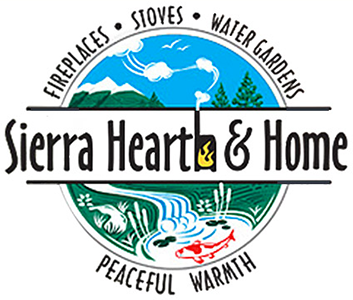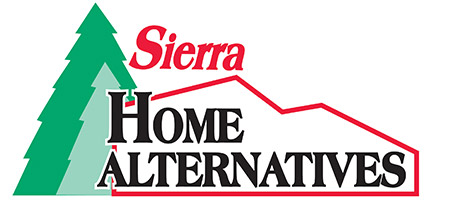There are many homeowners who choose to clean their own chimneys. You burn wood and know the importance of cleaning the chimney. But how often should I clean it? What do I look for? What equipment is needed? Are there any dangers to be aware of? If you’ve ever asked yourself these questions, we have a few tips for you.
FIRST STEP – ALWAYS BURN DRY WOOD!
- Cut it – in lengths appropriate to your fireplace or stove.
- Split it – in pieces about 4” – 7” in diameter. Split wood dries much better!
- Stack it – to allow air to freely circulate through it.
- Cover it – to keep off rain and snow. But allow the sun to get to it and air to freely circulate through it.
- Leave it – for one year. That’s right, one year! Plan to get a year ahead with your wood supply.
- Check it – with a moisture meter. Aim for moisture content between 15 – 20%. It’s $20 – $30 well spent.
DO NOT . . . .
- . . . . cut it and split it today and burn it this heating season.
- . . . . assume that a standing, dead tree is dry enough to burn. Even if it’s been dead for 6 or 8 years and the bark is off the larger branches and the trunk, the wood needs to be properly prepared. Follow the steps above.
- . . . . burn anything but cordwood. Absolutely no painted or treated lumber, driftwood, Christmas trees or limbs, colored paper, cardboard or any type of plastic.
- . . . . use any type of accelerant to start a fire.
By following these ten steps listed above, your chimney cleaning endeavor is going to be made much easier and quicker.
NECESSARY EQUIPMENT
Chimney cleaning is a messy and dirty job. Prepare accordingly. Be sure to use drop cloths or large plastic sheets to protect the floor and furniture.
On the roof, determine the exact size of your chimney by measuring the inside dimensions. Some are rectangular, some are round, others might be square or oval. A chimney cleaning brush should fit tight in the chimney. Do not buy a brush too small or too large. It needs to fit snug in order to scrap deposits from the sides of the chimney. Masonry chimneys will use a steel bristled brush. Stainless steel chimneys use a poly filament brush so the inner wall of the pipe is not damaged by steel bristles.
You will need flexible fiberglass rods to attach to the brush. So, check the overall height of the chimney. If a measuring tape cannot be used, simply drop a rope from the top of the chimney, through any offsets and down through the damper and into the fireplace. Then, simply measure the rope. Be sure the connection between the brush and rods are compatible. Rods and brushes from different manufacturers use different types of threaded connections or locking mechanisms. Make sure the brush and rods match up.
Wear fall protection equipment or a safety harness when working, especially if your roof pitch is steep, 6/12 or more. Eye protection and heavy leather gloves are required, too. And by the way, a log chain is not on the list of approved chimney cleaning equipment. It will damage any chimney.
THE PROCESS:
Most chimneys are cleaned from the top, down. This is the preferable way to clean. You have gravity working in your favor. Plus, it’s considerably easier to push a cleaning brush down a chimney. And you’re normally able to keep the doors to the fireplace closed. This can really help keep the soot and dust contained inside the fireplace.
Remove the chimney cap and set aside. With a strong flashlight, inspect the inside of the chimney. On a sunny day, a mirror reflecting the sunlight works well, too. Start by attaching one or more lengths of rod onto the brush. The brush should be slightly larger than the chimney. It should take some effort to get it moving down the chimney. Move the brush with an up/down scrubbing motion several times. The idea is to thoroughly scrub the inside. Once you’ve gone down the entire length of the chimney, perform the same operation on the way up, removing lengths of fiberglass rods as needed. Once the brush gets to the top, be careful when you pull it out of the chimney so you don’t get a faceful of soot.
Inspect the chimney again. It should be considerably cleaner. Carefully look at the flue tiles. Are there any cracks or missing pieces? Is the mortar sound or is it missing between lengths of the flue tiles? If yours is a stainless steel chimney, are all pipe length firmly connected? Any rust inside the pipe or any noticeable damage? There should be no obstructions anywhere in the chimney. Are the offsets in the chimney clean and in good condition? Any issues with these questions warrants a call to a professional.
Once satisfied, securely replace the cap and clean out the fireplace. Cleaning out the inside of the fireplace can be done with the shovel and broom from the tool set or with a vacuum designed for fireplace. Do not use a household vacuum or shop vac. You’ll get dust air-born throughout the house. If there’s an ash drop in the floor of the fireplace or a soot hatch, use it.
RESOURCES:
National Fire Protection Association’s code (NFPA 211) is for fireplaces and chimneys. The primary purpose of this code is to remove fire hazards associated with the construction and installation of fireplaces, chimney and venting systems for solid fuel appliances. If questions regarding a wood-burning fireplace or stove project is not covered in an owner’s manual, or if you are installing an untested and unlisted appliance, the information in NFPA 211 is critical for a safe installation.
NFPA 211 states that a chimney is to be inspected at least once a year and cleaned if necessary.
Another resource that merits regular visits is The Chimney Safety Institute of America. The Chimney Safety Institute of America (CSIA) is an organization dedicated to the training, educating and certification of chimney and hearth industry professionals. This is the organization that certifies professional chimney sweeps. A certified chimney sweep should be a valued resource for any homeowner that burns wood.
SO, HOW DO I PROPERLY INSPECT & CLEAN A CHIMNEY?
Your WE LOVE FIRE expert feels the most appropriate answer to this question is: call a professionally certified chimney sweep! They have been specially trained and must pass a national exam that tests their knowledge of construction practices, appropriate codes and industry trade standards. It’s money well spent. And, most people sleep better knowing that an experienced eye and a skilled set of hands have thoroughly inspected and cleaned their chimney system.












2 Responses